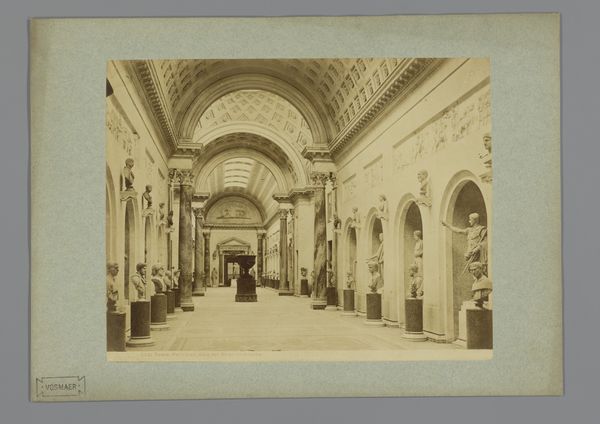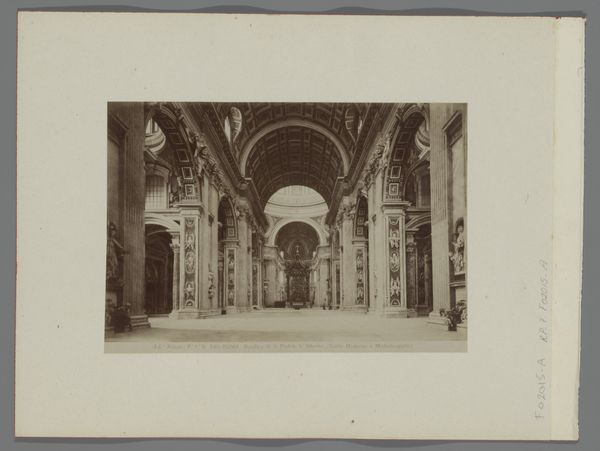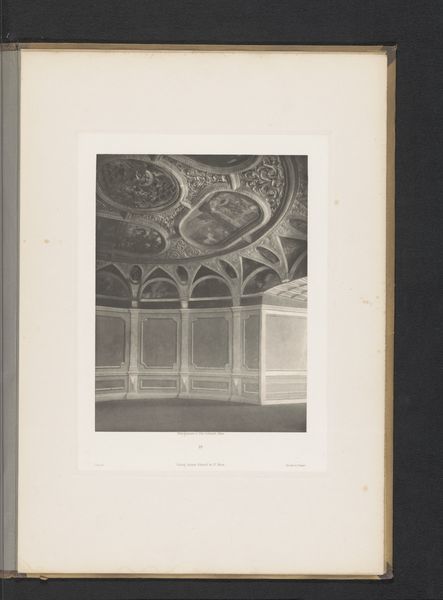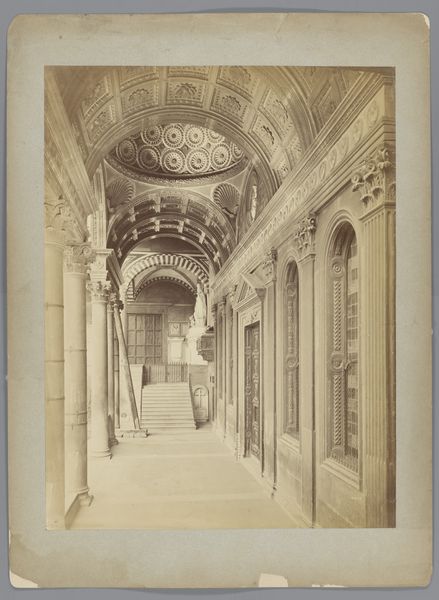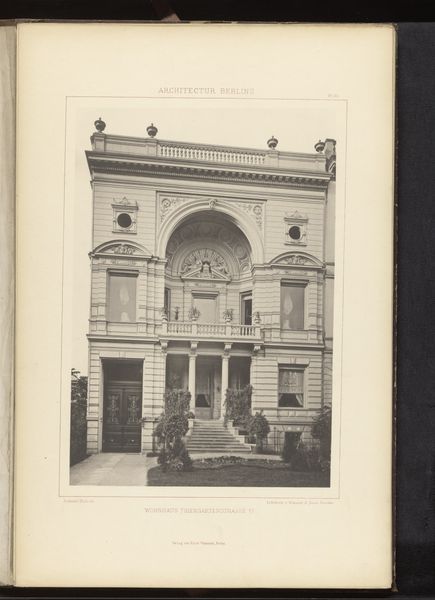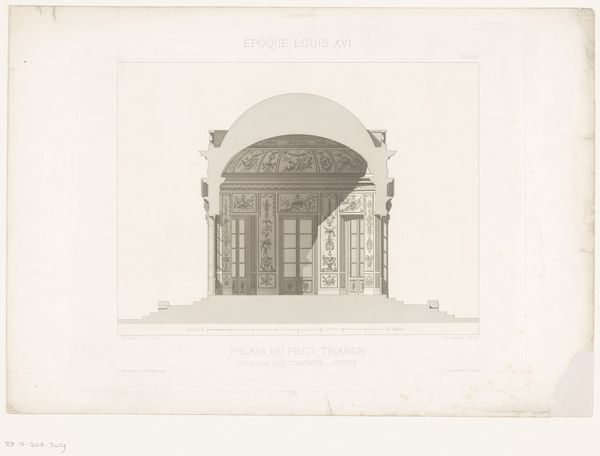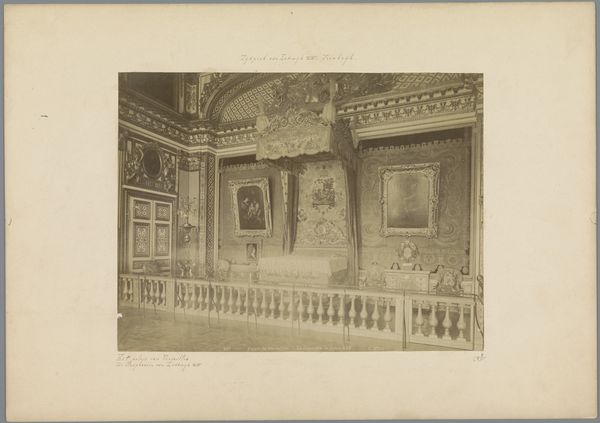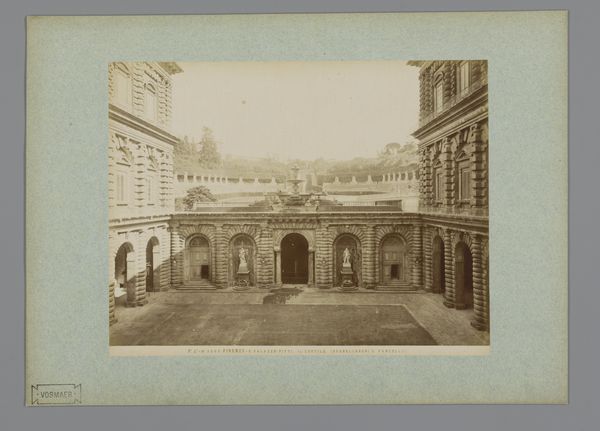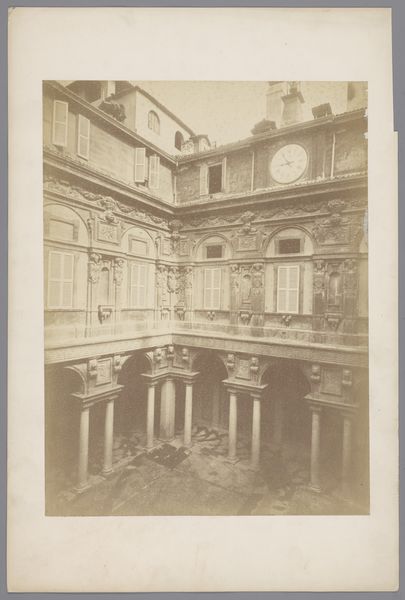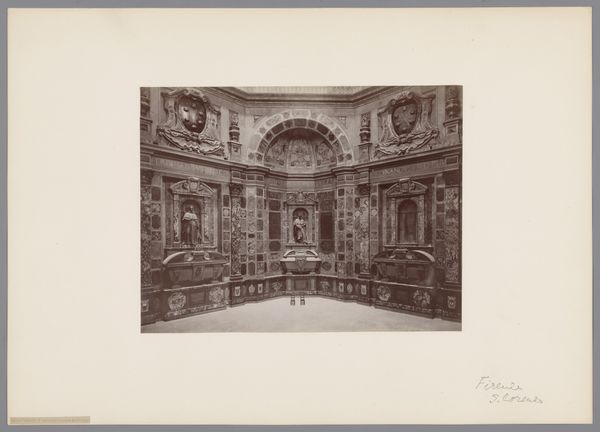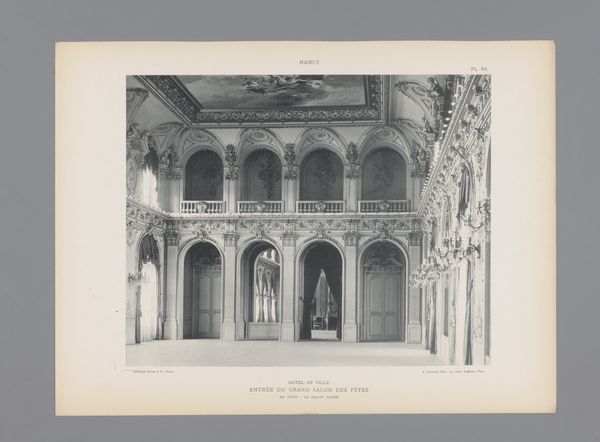
print, photography, gelatin-silver-print, architecture
# print
#
greek-and-roman-art
#
landscape
#
photography
#
geometric
#
ancient-mediterranean
#
gelatin-silver-print
#
cityscape
#
architecture
#
realism
Dimensions: height 97 mm, width 142 mm, height 168 mm, width 223 mm
Copyright: Rijks Museum: Open Domain
Editor: This gelatin-silver print, "Interieur van het Pantheon te Rome, Italië," attributed to Fratelli Alinari and dating between 1852 and 1900, really captures the vastness of the Pantheon. The geometric patterns are mesmerizing! What do you see in this piece? Curator: What strikes me is how this image engages with the then-burgeoning cultural fascination with antiquity and its relationship to modern Europe. This isn't just a depiction of architecture; it's a political statement. Consider the Pantheon's transformation: originally a Roman temple, then a Christian church. What does presenting it in this specific, almost sterile, way achieve? Editor: Almost sterile? It does seem very formal, now that you mention it. Almost…scientific. Curator: Precisely! Think about the rise of photography as a tool for documentation and how it's being used here. The Alinari brothers aren't just recording a space; they're presenting a carefully constructed image that implies objectivity and perhaps even the cultural authority of the photographer's gaze over history itself. How do you think the lack of human presence impacts our interpretation? Editor: It makes it feel even grander, like the space dwarfs us, reinforcing the power of the Roman Empire and the Church! Curator: Exactly! And in the absence of people, the architecture itself becomes the sole protagonist. This emphasizes the Pantheon as a site of power, subtly reminding the viewer of Italy's past glories, perhaps even advocating for its future resurgence. Editor: I never considered photography as a means of conveying a political agenda! Now, I see the building in a very different light! Curator: It's all about understanding the social and political context of its creation and reception! Photography isn't a neutral medium; it's a lens through which we view history, shaped by those who hold the camera.
Comments
No comments
Be the first to comment and join the conversation on the ultimate creative platform.


